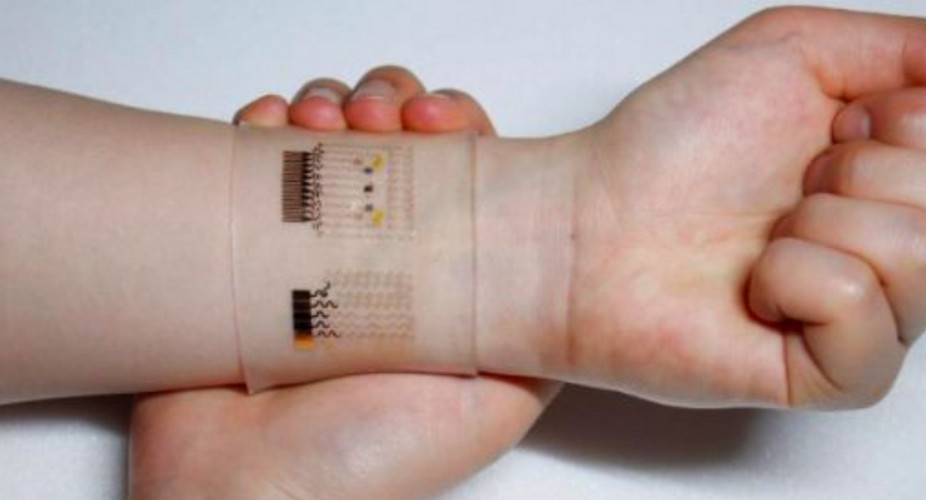It’s not necessary to be tethered to a desk in order to use a laptop computer today. Innovators at Cornell University have created a computer interface that mimics the feel of human skin, which has potential uses in fields as diverse as fashion and health monitoring. Research on wearable computers has blossomed in recent years.
Carmel Majidi, Carnegie Mellon University’s director of the Soft Machines Lab in the College of Engineering, emphasises the significance of “skin wearable computers” by pointing out their capacity to reliably gather human movement and physiological features, including health vitals.
A report outlining a wearable computer device developed by Cornell University researchers was published in scholarly journals in January of this year. The “skin fabric” used for temporary tattoos is made by laminating water, silicone textile stabiliser, and regular tattoo paper to create a multilayered thin film structure. Modular, flexible printed circuit board components can be added and used to give the material new capabilities. Skin computers allow “very accurate sensing of a lot of physiological data,” as pointed out by Cindy (Hsin-Liu) Kao, senior author and research assistant professor in human-centered design, via email to the author.
The potential applications for enhancing people’s health are exciting and extensive. A tattoo’s meaning frequently extends far beyond its superficial appeal. Kao explained, “And we can also see that there is a lot of potential for new forms of fashion and expression,” by envisioning a future in which skin computers would enable you to change the shade of your eyeshadow tattoo based on your mood.
According to Majidi, the past decade has seen the development of a wide range of computer systems that may be worn on the skin, thanks to the efforts of academic research labs all around the world. Possible uses for ultrathin film bioelectrodes in skin computers include physiological monitoring (such as the detection of heart, brain, and muscle electrical activity), tactile sensing, and motion tracking. He recently began selling the various electronic gadgets he had created. He also added that “many other commercial gadgets have been developed for skin-worn health monitoring.” Battery-free, bendable, soft, and thin technology like this is representative of the cutting-edge innovation being developed in university labs; it adheres to the skin like a sticker or a band-aid, and it may take on a variety of forms.
Achieving a satisfactory level of technical sophistication in the creation of computer-generated synthetic skin is a significant challenge. Majidi claims that it is difficult to incorporate cooling fans, heat exchangers, and other bulky hardware into modern portable gadgets in order to dissipate the heat generated by their computer processors and circuits. Scientists attempting to regulate the temperatures of such objects will require a combination of compact, lightweight electronics and thermally conductive soft materials. It hasn’t been a major problem up until now because, as he described it, “early versions of skin wearables have limited processing capability or demand.” In the future, this could be a major roadblock due to the computational complexity required to perform the many functions of skin wearables, such as multimodal sensing, signal processing, artificial intelligence, and communication.
Professor of Computer Science at the University of Chicago and skin-computers expert Pedro Lopes has speculated that cellphones may one day become obsolete.
He claimed that LED skin patches with integrated touch sensors are now in the prototype stage. A smartphone’s touchscreen and display can be replaced with “components like touch sensors and illumination,” according to the author, who sees smartphones evolving into more of a wearable item.
Lopes imagines a day when electronic skin patches can identify health issues and dispense the appropriate medicine at the appropriate time, much like wearable insulin pumps and glucose metres can keep the user’s insulin levels under control without manual intervention. Plus, skin-based haptics, which Majidi says will be used in VR in the future, are devices that convey physical sensations from computers to the skin.
What he said concerning the development and popularity of wearable devices that can be powered by the user’s motion or body heat is absolutely correct. These energy collectors, he reasoned, would free wearable tech from the tyranny of the charging cable.



